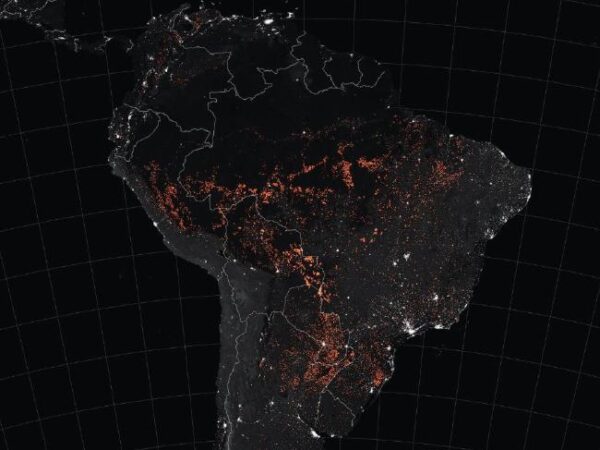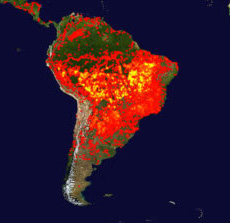- Like
- Digg
- Del
- Tumblr
- VKontakte
- Buffer
- Love This
- Odnoklassniki
- Meneame
- Blogger
- Amazon
- Yahoo Mail
- Gmail
- AOL
- Newsvine
- HackerNews
- Evernote
- MySpace
- Mail.ru
- Viadeo
- Line
- Comments
- Yummly
- SMS
- Viber
- Telegram
- Subscribe
- Skype
- Facebook Messenger
- Kakao
- LiveJournal
- Yammer
- Edgar
- Fintel
- Mix
- Instapaper
- Copy Link
When I was a doctoral student at Antioch University New England, I had the opportunity to hear my fellow classmates discuss their work. One research project that stands out was a study to identify the species of Amazon rain forest trees that were home to the largest amounts of bugs. The student doing this project was basically going to analyze bug poop, also called frass, to determine bug populations.
He devised a way to place large tarps under various species of trees during the night. His goal was to collect bug frass. The next morning, his lucky assistants would carefully pick up the tarps and then using various sizes of sieves, sift the frass according to size. Then they would weigh it and attempt to identify the possible types and number of bugs sleeping in those trees.
I never forgot his study because it was humorous but also interesting. Right now, those trees that he was trying to identify are being destroyed, as a significant portion of the Amazon rain forest is currently on fire. A National Geographic article stated, “The Amazon rain forest is the greatest expression of life on Earth. It is home to about a third of our planet’s terrestrial life forms, cycles about one-quarter of the Earth’s freshwater, and plays a key role in absorbing carbon and moderating climate.”
According to the New York Times, “more than 26,000 fires have been recorded inside the Amazon in August alone.” But France 24, a French state-owned international news network, said the fires are much worse, numbering more than 72,000. A Brazil space research center, the National Institute for Space Research (INPE), said the fires are the worse since their record-keeping started in 2013.
The recently elected President of Brazil, Jair Bolsonaro, is no friend of the Amazon rain forest. Often during his election campaign, he spoke harshly about indigenous people and their rights to inhabit the Amazon. Currently, about 13 percent of Brazil’s Amazon territory is recognized as belonging to indigenous tribes. Bolsonaro has also said he will pull out of the Paris Climate Agreement. While campaigning last year, he promised to open indigenous lands to mining, do away with the Ministry of the Environment, relax environmental laws and licensing, and ban international groups like Greenpeace and the World Wildlife Fund from entering Brazil.
Bolsonaro has become so notorious for his anti-environmental stances on logging, mining, and ranching, that he has been dubbed “Trump of the Tropics.” There is even talk that the powerful mining, logging, and ranching lobbies want to amend the 1988 Constitution and remove legal protection for indigenous lands. Bolsonaro ran on a slogan that said “Brazil before everything,” so it is not hard to believe he initially ignored offers of aid–22 million dollars from the world’s seven largest economies–to help fight the Amazon fires. He has, as of August 27, accepted 12 million dollars to help deploy 44,000 troops and to use warplanes to douse flames.
On August 4, Bolsonaro fired Ricardo Galvao, physicist and the director of the National Institute for Space Research (INPE). The firing occurred after the two had an argument where Bolsonaro called the institute’s findings of deforestation increasing since he took office a lie. According to data from the INPE, the number of fires in the Amazon has increased by eighty percent since Bolsonaro took office. Brazil has a system called Real-time Deforestation Detection System (DETER) to detect illegal deforestation.
This destruction, burning forests to clear land for grazing cattle and farming soybeans is not new to the Amazon. The data shows there have been fires from deforestation since 2002. Even land designated as a state park has been stripped of trees and used to graze cattle, with at least 240,000 cows found grazing in the park. Clearings in the park have also been developed into landing strips for airplanes. JBS, the biggest supplier of beef in the world, is driving this deforestation and has been at the center of a huge scandal.
The main reason that deforestation has greatly increased is due to meat consumption. “Brazil is the world’s largest exporter of beef, with a record 1.64 million tons sent to its top markets in China, Egypt and the European Union in 2018” according to the Brazilian Beef Exporters Association. The top three companies responsible for the beef production are JBS, Minerva, and Marfrig. It was reported that of the cleared land, 65 percent was being used for grazing. A smaller portion of the land is used for growing soybeans and these are used to feed poultry and pigs. China is the largest importer of Brazilian soybeans but the United States also imports some of the crop.
A 2015 report from the Woods Hole Research Center discussed the importance of stopping deforestation of tropical forests. We know that forests, no matter where they are, are a big carbon sink for our carbon dioxide emissions. While it is hard to calculate just how much carbon might be in those forests, we know that burning them releases enormous amounts of carbon back into our atmosphere and oceans.
Drawdown, a recently released book which compiles researchers, scientists, and policy makers solutions to climate change, listed adopting a plant-rich diet rather than a meat-centric one as the fourth best way to combat climate change. Unfortunately, countries like China are seeking to emulate the Western meat-based diet which will drive the world’s heavily subsidized meat production even higher.
The book states, “if cattle were their own nation, they would be world’s third-largest emitter of greenhouse gases.” A 2016 report said that we could save one trillion dollars in annual health-care costs and lost productivity by adopting a vegetarian diet. Just by avoiding the additional greenhouse gas emissions from cattle and stopping deforestation, we could reduce our emissions by 66 gigatons.
The inhabitants of the rain forests, the insects, animals, and plants are also being destroyed as these fires burn. An excellent article displays several INEP graphs that show the grave situation now going on as fires eat away at millions of acres. By the end of July this year, the deforestation was at 1,103,350 acres during the seven months, while 2018 was 704,000 acres during the same time period.
You might ask why should I care? You should care because this forest provides over twenty percent of the world’s oxygen. The Amazon affects rainfall patterns as far away as the United States. The Amazon, which has approximately 16,000 species of trees, is home to 427 mammal species, 1,300 bird species, 378 species of reptiles, and more than 400 species of amphibians.
Some of the animals that live in the Amazon rain forest include jaguars, sloths, river dolphins, macaws, and anacondas. The forest provides a canopy to approximately 80,000 species of plants, many of which are used in modern medicine today. “Twenty-five percent of all current western medicines are derived from plants found in the rain forest. It is estimated that medical researchers have tested just 1% of the flora and fauna of the rain forest for medically active compounds, but at the current rate of destruction, the Amazon forest will be gone in just 40 years.”
When I was sixteen, my father was diagnosed with an autoimmune neuromuscular disease called Myasthenia Gravis. At that time, 1971, it was a hard disease to diagnose because the symptoms mimicked several other diseases. The affected person has symptoms almost identical to someone who has been exposed to the poison curare, which is made from a native plant located in the Amazon. Curare’s active ingredient tubocurarine is an alkaloid extracted from Chondodendron tomentosum. The species has a heart-shaped leaf and is a climbing understory plant. The toxin works by blocking the brain’s messages to direct the muscles to move. My dad’s doctor in Pittsburgh used a test that required the compound found in curare. After that test, we knew for sure that my dad had the disease.
Smoke from the fires has become so bad that day has become night in Sao Paulo. The forests are, as one scientist Carlos Quesda puts it, “buying time” for us to address climate change. As they burn, billions of tons of carbon that have been stored in the vegetation for decades, is released and the forest turns into a savanna. The landscape is no longer able to sequester carbon dioxide as a rain forest does. Stopping these fires in the Amazon should be the world’s top priority. Whether we adopt personal actions or demand our politicians engage in a global initiative, we cannot watch while the lungs of the planet burn.
August 30 update: Brazil Announces 60-Day Ban on Clearing Land With Fire
September 20-27: Global Climate Strike
#strikewithus
Marshall University Strike
Friday, September 20, 2019 • 3:00 PM
Buskirk Field
One John Marshall Dr.
Huntington, WV 25755
——
‘No Time Left for Business as Usual’: Climate Activists Plan Day of Mass Civil Disobedience to #ShutDownDC
——











I have two comments in relation to this. First, it needs to be emphasized that rainforest has its biomass all tied up aboveground; so when you clear it, you leave behind a thin, poor soil nothing like the deep soil under our temperate forests. Consequently, after large-scale clearing the forest will NOT come back. This is permanent elimination going on.
Wait, three comments; also, I read yesterday (but now can’t find) a piece that argued that this “20% of the world’s oxygen” is wrong–the complete elimination of the Amazon would reduce our oxygen by .4%. But it’s still critical for carbon sequestration, and for biodiversity.
The third comment is about the claim that vegetarianism would greatly reduce climate impacts. I think, based on what I’ve read, that this is not precisely accurate. What we need to eliminate is not all meat-eating, but CAFOs. That is, confined animal feeding operations–the huge feedlots in which thousands of cattle, or pigs or chickens, are stuffed with grain and antibiotics to fatten for slaughter. Here in WV, cattle and goats and chickens and pigs are practical ways to grow food on our sloping pastures and (in the case of pigs and chickens) in the woods. I suspect that the banning of CAFOs would make it impossible for the world’s humans to eat as much meat as they do now; and likely this would be better for the health of the richest segment who eat the most meat. Likely this would also reduce dairy intake, ditto–although eggs are so easily produced in small backyard operations that egg intake need not be reduced by the elimination of the huge inhumane egg factories. I suspect that for most people a diet with plentiful eggs and a little dairy, plus occasional meat or fish, would be healthier than pure veganism. Just my opinion.